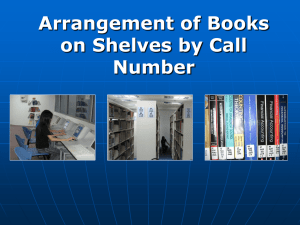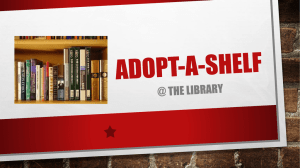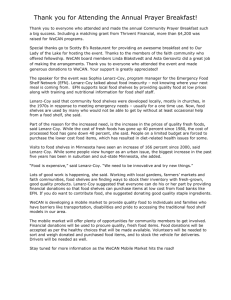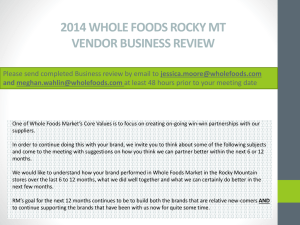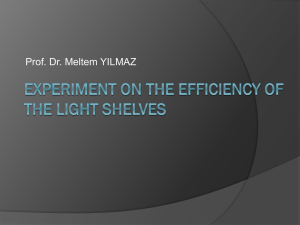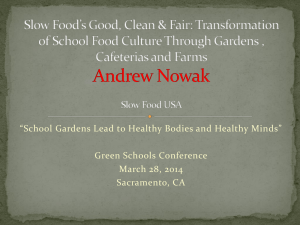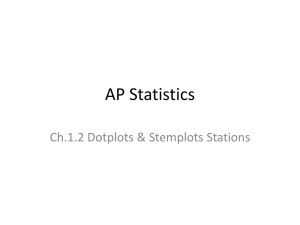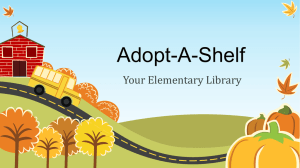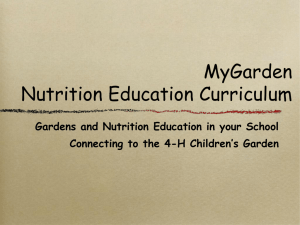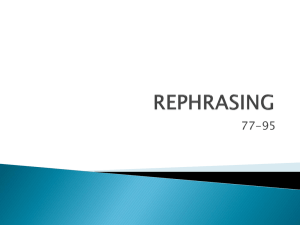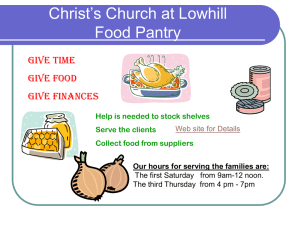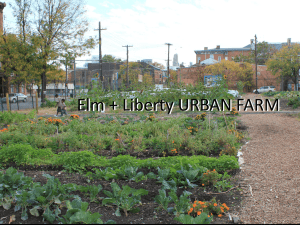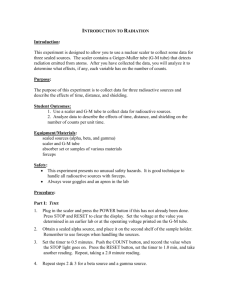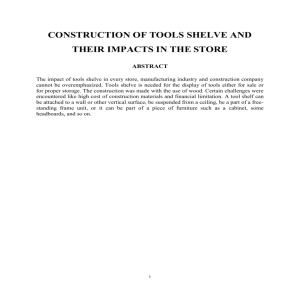PPT - Stagetime Productions
advertisement
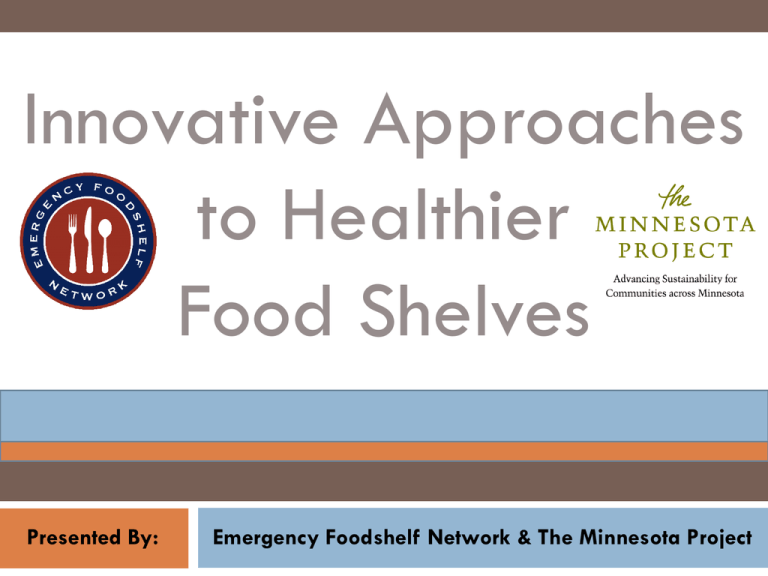
Innovative Approaches to Healthier Food Shelves Presented By: Emergency Foodshelf Network & The Minnesota Project Presentation Overview Increasing Healthy Foods in your Food Shelf Fruits of the City Program Garden Gleaning Project Garden to Table Program Increasing Demand for Healthy Foods Healthy Foods Policies & External Communication Community Collaborations Merchandising Strategies Evaluation & Collective Impact Gleaning Education Community Orchards Yearly Impact YEAR POUNDS GLEANERS TREE OWNERS FOOD SHELVES 2009 15,000 125 100 6 2010 24,000 150 50 12 2011 31,000 125 117 20 2012 38,000 199 169 31 Our Mission To facilitate the harvesting and distribution of fresh produce from gardens in the community to local food shelves. Garden Gleaning Project Garden Gleaning Relationship Building – Neighborhood Crd. Support Each Food Shelf with Donors Community Gardens Home Gardens Farmers Markets & CSA’s Congregations Corporate Gardens Support Donors Resources to plant & donate more Neighborhood Coordinators Pick up and Deliveries Increasing Engagement “Zucchini is a gateway drug. Once you get growers hooked on how good donating feels, they will find other produce to share as well.” Iowa Food Gardening Social Marketing Initiative Assessment Executive Summary Let’s Make Donating Feel Good! “I would be happy to donate money to my food shelf, but I need confidence in them that they are effectively using my garden donations first.” - Donating Gardener Garden Gleaning Progress 2011(volunteer based) 2 Partner Food Shelves 7,334 pounds 2012 5 Partner Food Shelves Over 22,000 pounds 2013 7 Partner Food Shelves Toolkit – Best Practices Results & Process Intentionally Diverse Toolkit For Food Shelves Building Relationships Neighborhood Coordinator Model Outreach & Communication Strategies Handling & Storage For Produce Growers Why Donate? How to Donate? What to Donate? Liability & Safety Little Kitchen Food Shelf CAPI Food Shelf Get Involved Refer gardeners and fruit tree owners to MN Project Recruit Local Volunteers Fruits of the City Engage folks in growing food for you! Consider a food shelf garden Plant fruit trees Get to know your nearby gardeners Review the Toolkit Contribute to the next edition ERC’s Garden to Table Direct Nutrition Education EFN’s Nutrition Support Karena Johnson, MS, RD, LD| 763.450.4207 Nutrition Outreach Specialist | kjohnson@emergencyfoodshelf.org Policy, Systems, and Environment Creating Change Upstream Makes the Biggest Impact Policy Change Changing Laws, Policies, and Rules – Formal and Informal Policy Change at a Food Shelf Healthy Foods Policy What & Why Policy Change at a Food Shelf Create a Healthy Food Policy Broader Commitments Donated Product Monitoring & Measuring Purpose Guidelines Nutrition References Nutrition Purchased Commitments Product Monitoring & Priorities & Restrictions Measuring Policy Change at a Food Shelf Development Process for a Healthy Food Policy Annual Assessment/ Review Implementation & Monitoring Create Buy-In Stakeholder Feedback Develop Policy ApprovalLeadership & Board Policy Change at a Food Shelf Healthy Food Drive Communication Before After Systems Change Changing the Underlying Structures of a System – Values, Relationships, Policies, and Power Structures Systems Change: Local Foods Social Innovation Lab & Northside Fresh Environment Change Changing the Economic, Social, or Physical Environment Environment Change at a Food Shelf Environment Change at a Food Shelf Merchandising Strategies: Facing Before After Environment Change at a Food Shelf Merchandising Strategies: Display Before After Environment Change at a Food Shelf Merchandising Strategies: Healthy Foods Signage Environment Change at a Food Shelf Merchandising Strategies: Cross Merchandising Evaluation How do we know if what we’re doing is working Evaluation: Nutrient Profiling & HEI Component Maximum Points Score Total fruits (includes 100% juice) 5 5 Whole fruit (not juice) 5 5 Total vegetables 5 5 Dark-green and orange vegetables and legumes 5 5 Total grains 5 5 Whole grains 5 1 Milk 10 1 Meat and beans 10 10 Oils 10 10 Saturated fat 10 10 Sodium 10 5 Calories from solid fat, alcohol, and added sugar (SoFAAS) 20 20 TOTAL 100 82 What do these scores mean? •Score of 81-100 represents “good” •Score of 51-80 represents “needing improvement” •Score of less than 51 is “poor” Evaluation: Data Collection Collective Impact Questions??? Thank You Dave Glenn dglenn@mnproject.org Emily Eddy White eeddy@emergencyfoodshelf.org Jared Walhowe jwalhowe@mnproject.org Sophia Lenarz-Coy slenarzcoy@emergencyfoodshelf.org

